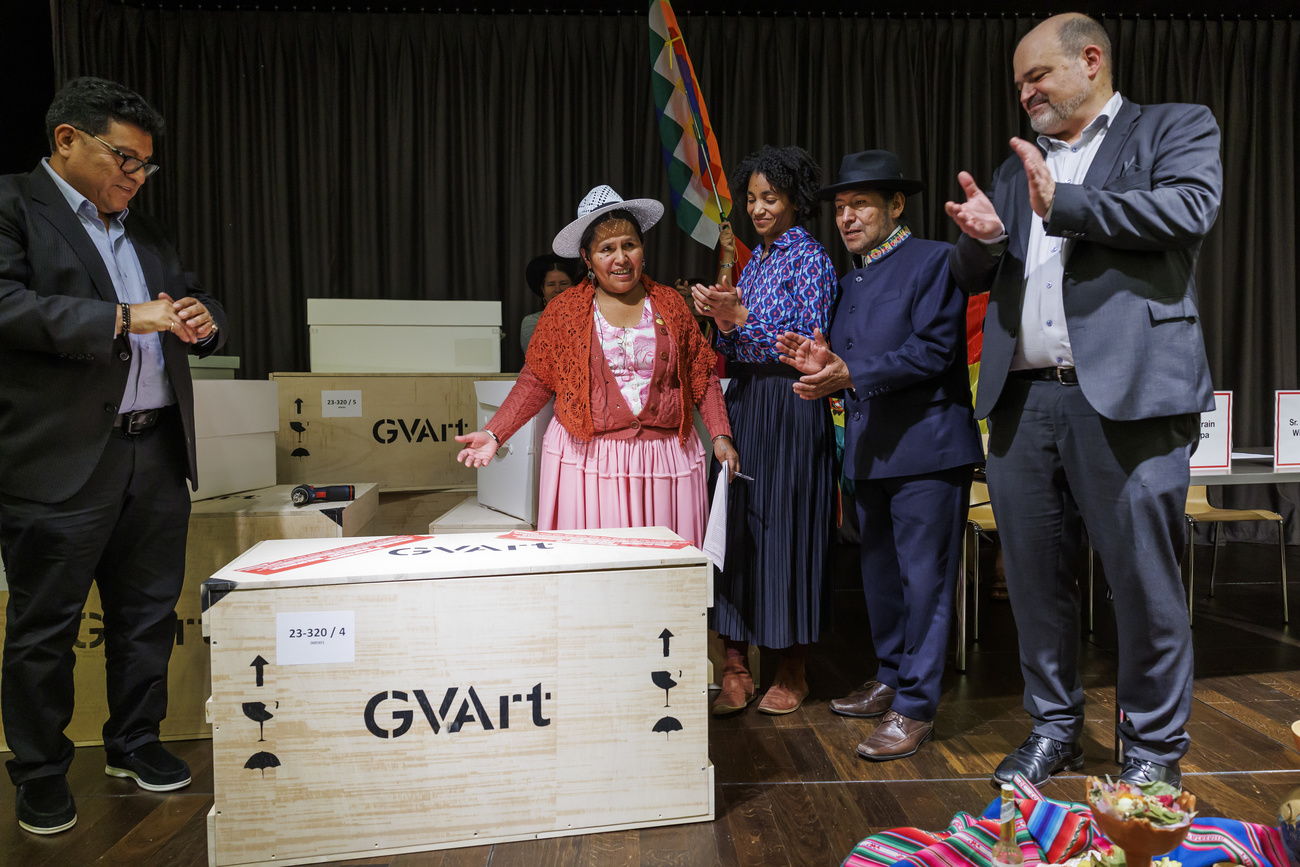
Geneva museum returns three mummies to Bolivia

Bolivia has recovered three 900-year-old mummies that had been in the collections of the Geneva Museum of Ethnography (MEG) for over a century. The human remains had been brought to Switzerland by an engineer without authorisation.
“This is a fundamental event for our states and our peoples,” said Bolivian Minister of Culture, Decolonisation and Depatriarchalisation Sabina Orellana Cruz on Monday. The restitution ceremony, which took place at the MEG, was broadcast live on Bolivian state television.
The mummies, two adults and a child, will go to Bolivia’s National Museum of Archaeology. They come from the Coro Coro region, a town perched at an altitude of 4,000 metres, 80 kilometres southwest of the capital, La Paz. They date from before Inca cultural domination.
+ Unwrapping the medical messages of mummies
Dialogue and respect
Carine Ayélé Durand, director of MEG, pointed out that the Geneva museum was very sensitive to the fundamental rights of indigenous peoples. The process of returning human remains or sacred objects is based on dialogue with the communities concerned.
Even if it is debatable, human remains are considered to be objects. This restitution allows for ethical reparation, Ayélé Durand said. “These three ancestors will never again be called objects from now on.”
+ Swiss embassy in Bolivia faces closure due to cost cuts
The ceremony to return the mummies ended with an indigenous funeral rite.
Bolivians from Geneva recalled that for them time is cyclical and not linear. The mummies are, at the same time, beings that live alongside them.
This news story has been written and carefully fact-checked by an external editorial team. At SWI swissinfo.ch we select the most relevant news for an international audience and use automatic translation tools such as DeepL to translate it into English. Providing you with automatically translated news gives us the time to write more in-depth articles. You can find them here.
If you want to know more about how we work, have a look here, and if you have feedback on this news story please write to english@swissinfo.ch.

In compliance with the JTI standards
More: SWI swissinfo.ch certified by the Journalism Trust Initiative




























You can find an overview of ongoing debates with our journalists here . Please join us!
If you want to start a conversation about a topic raised in this article or want to report factual errors, email us at english@swissinfo.ch.